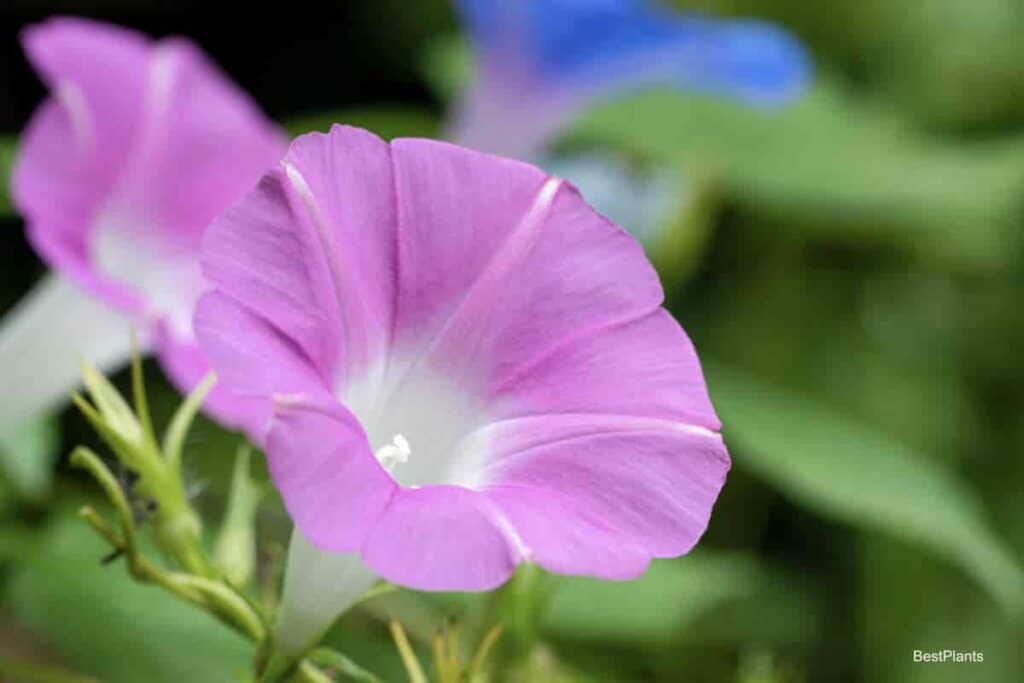Like the morning sun, morning glories greet the new day. Unlike the sun, though, they are to be enjoyed for only a few hours, but each successive morning brings more and more flowers that will brighten the garden and greet you with a cheery “good morning.”
At the turn of the century, morning-glories, or ipomeas, were among the most popular of all garden flowers. They were grown to quickly envelop unsightly spots and give them a dash of color.

in the size and color of blooming Morning Glories have been made!
But as the fashions in flowers changed, people tired of their small flowers and quaint colors.
It was not until the 1940s that morning-glories took on a new life when the early flowering strain Heavenly Blue made its appearance with 4 1/2″- 5″ inch flowers of sky blue color.
Other introductions of this same species:
- Ipomea tricolor (Ipomea rubrocaerulea) soon followed
- Pearly Gates, a white early season bloomer
- Blue Star, a light blue with deeper blue midribs
In 1939 another great morning-glory made its entrance, Scarlett O’Hara, a large flowering extremely early rose-cerise variety that won the gold medal award in the All-America trials.
In 1941, another new morning-glory, Darling, helped complete the garden picture. Darling is also giant-flowering and is rosy red with a sharply outlined snow-white throat.
There are also the “fancy” type varieties.
- Cornell, wine red with a somewhat bluish-white edging
- Columbia, blue with a small red star in the throat and a white edge.
Convolvulus – A Close Morning Glory Relative
Frequently seen in packets are the convolvulus, not a true morning-glory, but a relatively close relative. The flowers are small and usually starred with another color. Named varieties were Crimson Rambler, wine red with a bluish-white throat, and Rose Marie, a good rose pink with double flowers.
Although referred to as Ipomea alba, moonflowers are also known as Calonyction aculeatum. Unlike morning glories, moonflowers open in the evening and close in the early morning. Therefore, they are primarily desirable in southern gardens since they need a long season to mature.
Surprisingly, so few people are acquainted with the quamoclits (Ipomea quamoclit) – the little fellows. The largest among them is the cardinal climber with 2″ inch cardinal red flowers that attract hummingbirds. Another species is the cypress vine, Quamoclit pennata, with smaller, sharply five-pointed flowers.
Easy Growing Morning Glories
While morning glories are the easiest of all flowering plants to grow, they respond to good treatment.
- They prefer a well-prepared soil, for their root system is just about as extensive as the vine.
- Under most conditions, they will need no fertilizer, but a nitrogen-type fertilizer may be applied if required.
- Morning glories do not like handling. Separation of the vines will often kill the plant. Let them grow their own way.
- Plant the seeds in moist soil that has had a chance to warm up.
- They can be started inside and transplanted out about a foot apart when warm days and nights arrive.
You can expect a long season of enjoyment from the modern morning glories. They contribute toward an interesting and colorful garden.